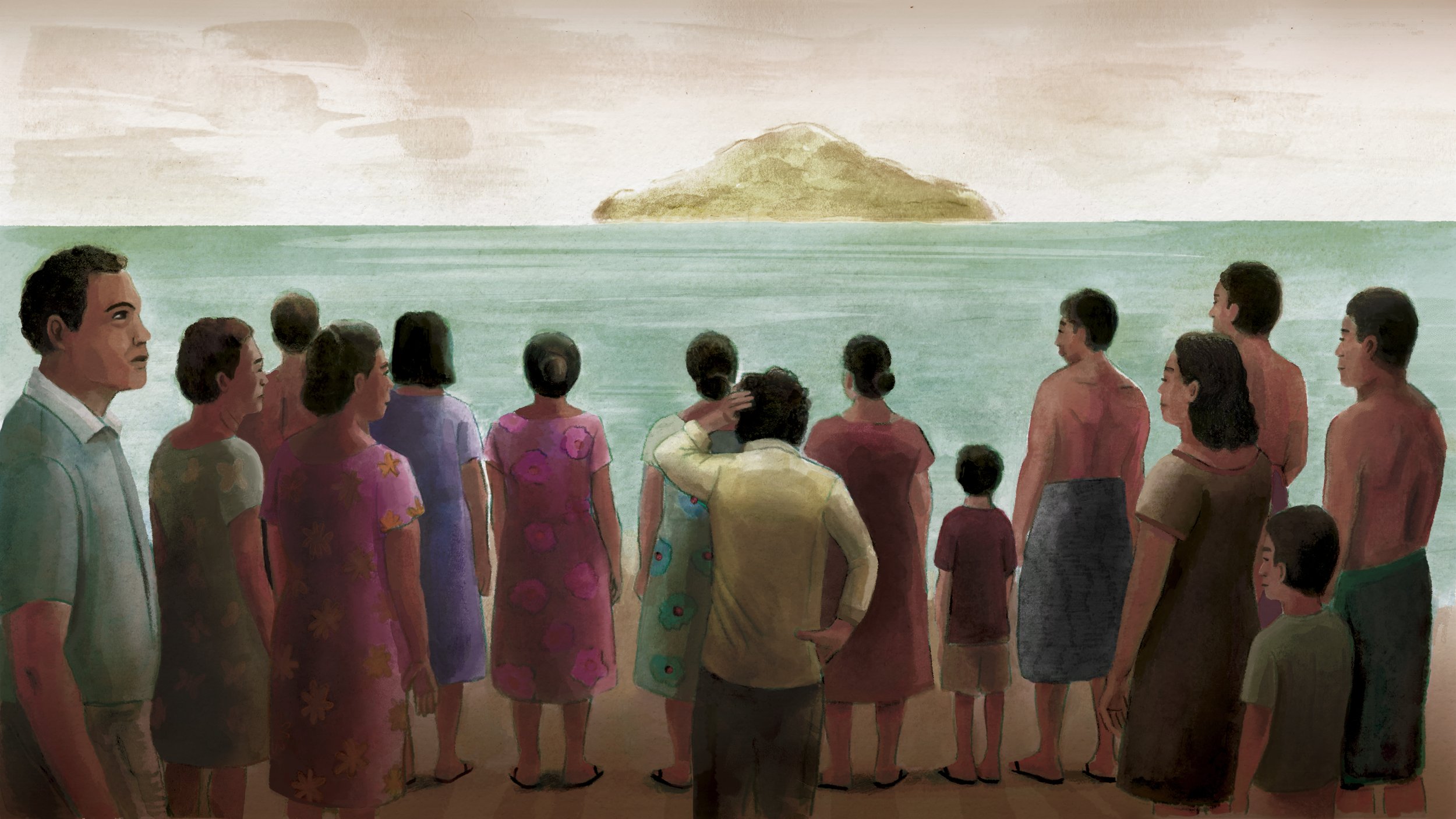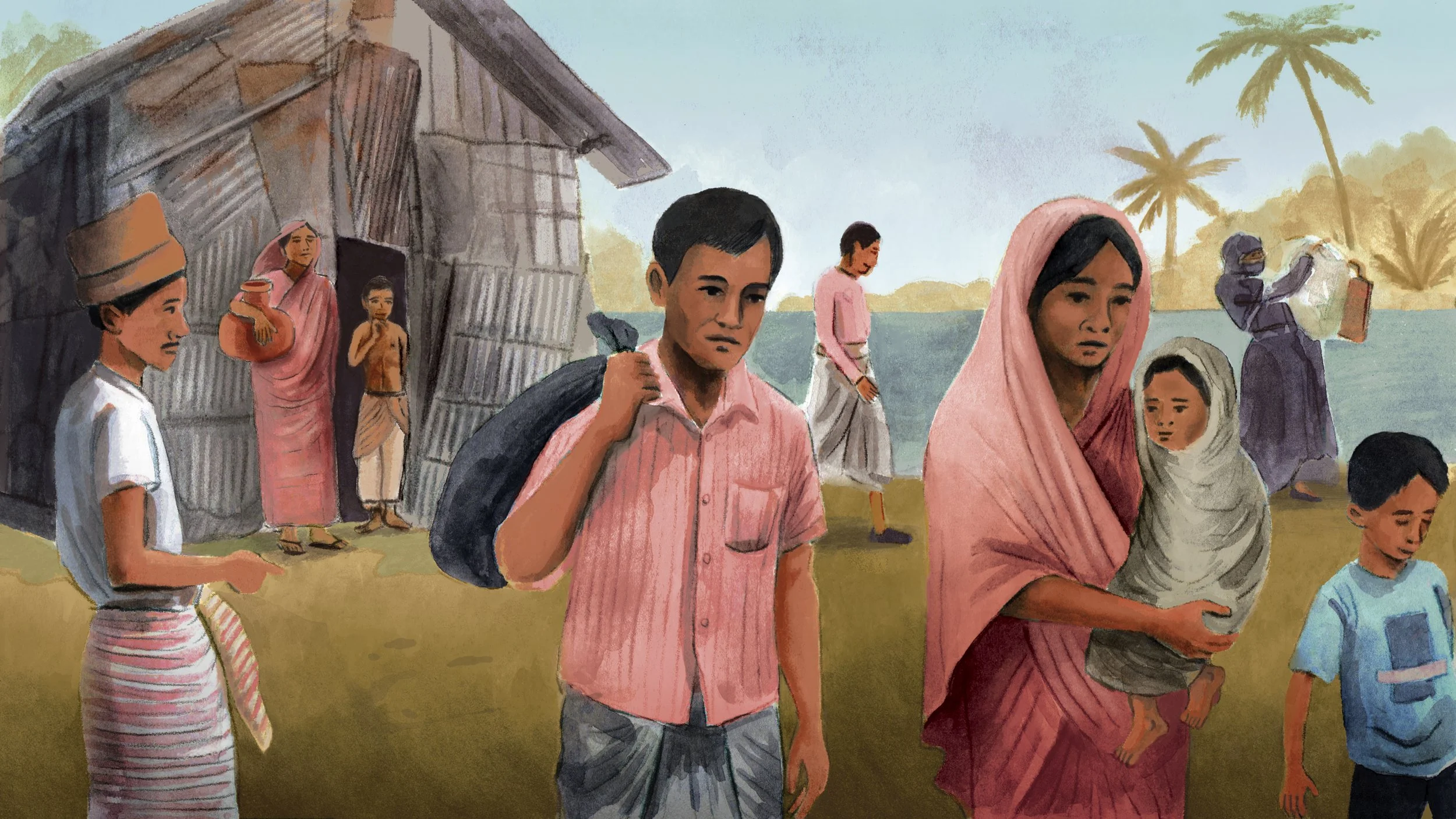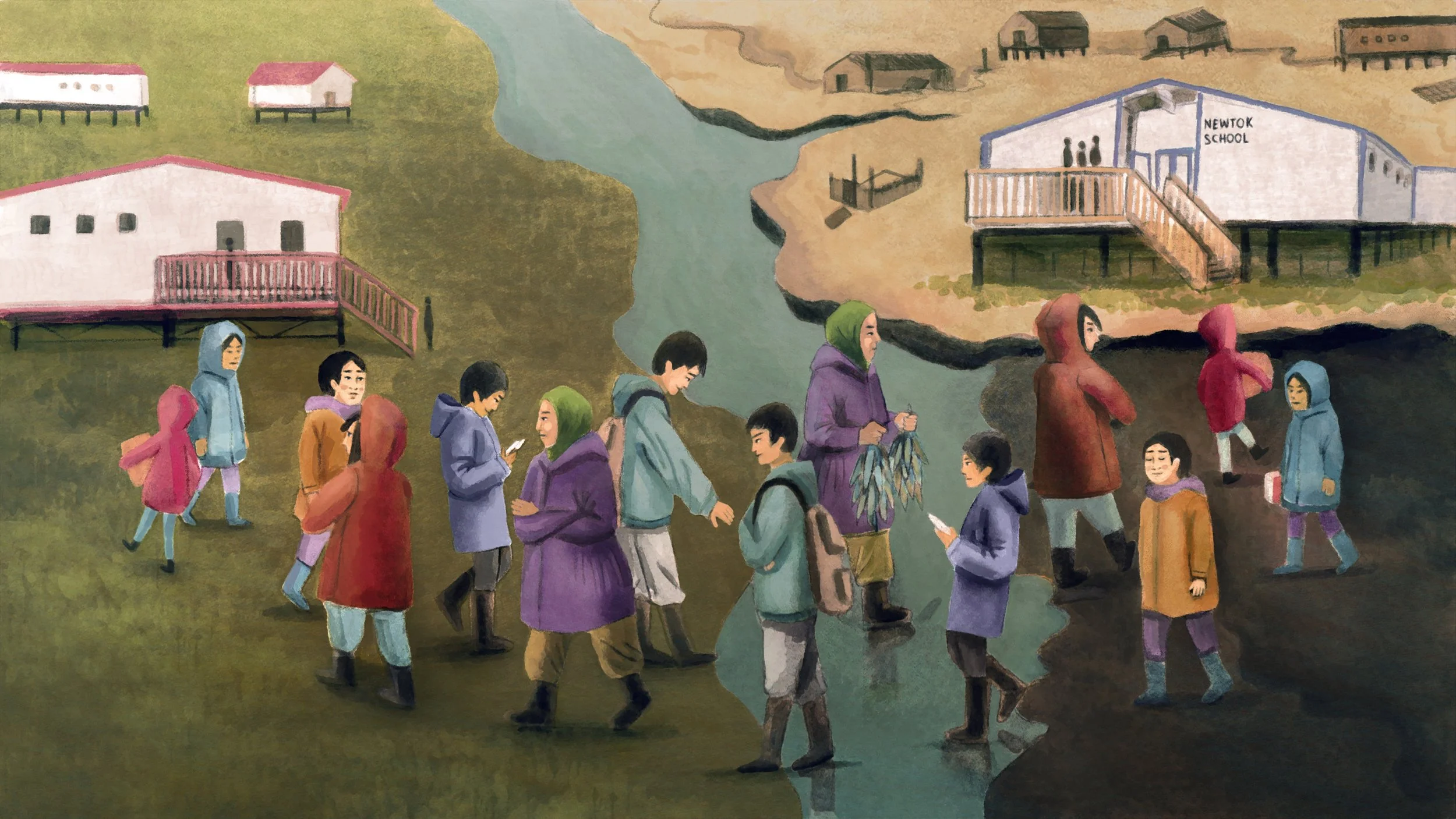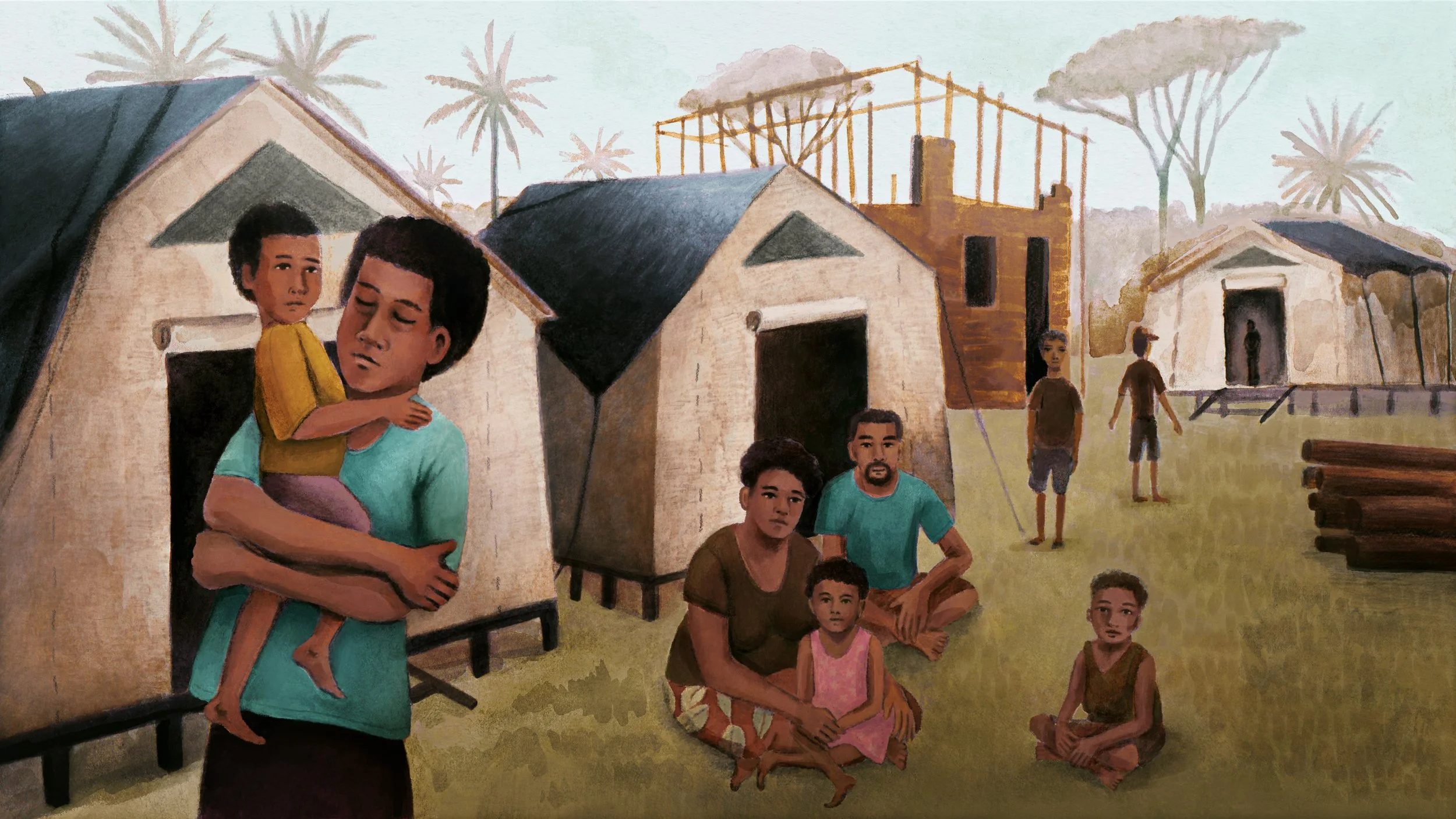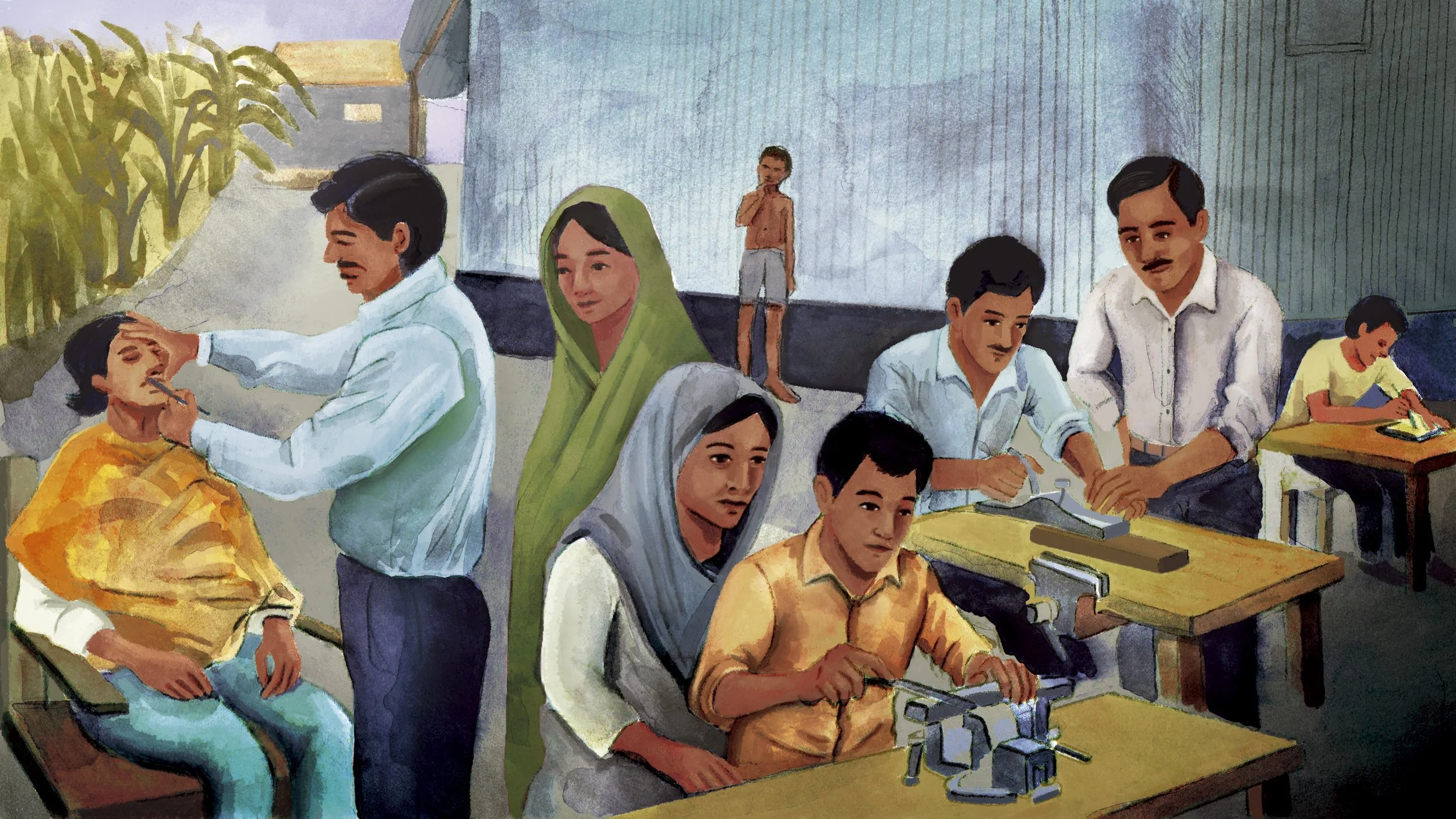In 2023, the United Nations University – Institute for Environment and Human Security (UNU-EHS) released a report exploring the work of CJRF partners addressing climate mobility—the ways in which people are forced or choose to move as a result of Loss and Damage (L&D). The report posed important questions: How does displacement drive loss and damage? Can planned relocation reduce it—or, if poorly supported, create it? And what happens to those who cannot or choose not to move at all?
Around the world, communities are living these questions every day. Yet the human stories behind mobility ─ the struggles, resilience, and feelings ─ often remain invisible.
To help bring these realities to light, we collaborated with Peruvian illustrator Víctor Ynami to create Visualizing Loss and Damage, a six-part series combining research, partner experiences, and visual art. Each story highlights how communities are responding to loss and damage in distinct ways—whether through migration, planned relocation, or the determination to stay.
At its core, the series highlights that communities are not passive in the face of climate impacts, they are active agents of adaptation, solidarity, and resilience.
Reconnecting Across Oceans: The Banaban People of Fiji
For the Banaban community, displacement has been a reality passed down through generations. After phosphate mining rendered their homeland uninhabitable in the 1940s, they were forced to relocate to Rabi Island in Fiji. Today, the Banaban Defenders, with support from CJRF partner UUSC, are rebuilding what was lost, both materially and culturally.
Their recent work to secure freshwater access for the first time in over 80 years became a collective act of healing and reconnection. Elders and youth came together to design solutions that honored their traditions while addressing new climate realities, ensuring accessibility for all community members.
Migration and Mobility in Bangladesh
In Bangladesh, climate hazards such as flooding, salinization, and river erosion are undermining livelihoods and pushing families into debt. For many, migration is not a choice but a necessity.
CJRF partners are helping communities navigate this landscape from multiple angles. Helvetas supports a youth-led migration hub that helps people migrate safely and successfully while using migration data for policy advocacy. Young Power in Social Action (YPSA) works with those who remain trapped in temporary settlements, empowering youth and community volunteers to identify relocation sites, lead social dialogues, and install water systems, ensuring that adaptation is community-driven and responsive to real needs.
Together, these initiatives show how evidence, advocacy, and local leadership can shape a more just and dignified approach to mobility.
Planned Relocation: From Bangladesh to Alaska
Planned relocation can be a powerful tool to protect communities, but only when it is inclusive and sustained.
In coastal Bangladesh, CJRF partners such as YPSA, COAST, and Helvetas are supporting planned relocation: YPSA has developed small-scale relocation model that moves one family at a time, ensuring secure housing, access to water and electricity, and integration with host communities. COAST and Helvetas reconnect displaced families to government programs in health, education, and social protection, helping restore dignity and stability.
In Alaska, relocation has been painfully slow. Communities like Newtok, Kivalina, and Shishmaref decided to move decades ago, but bureaucratic and financial hurdles have left many in limbo, split between old and new sites, enduring fragmented social ties and uncertain futures. Supported by the Alaska Institute for Justice (AIJ), Indigenous communities are reclaiming agency through a relocation governance framework rooted in tribal sovereignty and Indigenous knowledge. Their advocacy has even led to the recognition of usteq, a Yup’ik term describing ground collapse from thaw and erosion, as an official environmental indicator in Alaska’s hazard planning.
These contrasting experiences reveal that planned relocation is painstaking and slow, but it can either mitigate or deepen loss and damage, depending on who leads, and whose knowledge is valued.
Living in Displacement: Cogea, Fiji
In Cogea, Fiji, the aftermath of Tropical Cyclone Yasa in 2017 forced residents to abandon their village due to unstable ground conditions. Years later, many still live in temporary shelters, enduring unsafe conditions and uncertainty about their future.
With support from Climate Tok, UUSC, and local partners, the community is now advocating for a permanent relocation site designed with their input. Their persistence shows that displacement is not only a logistical challenge but an emotional and social one, about the right to safety, stability, and belonging.
Choosing to Stay: Voluntary Immobility in Bangladesh
Not all climate-affected people migrate. In some cases, their decision is to stay, and they need support to turn this choice into a reality.
In Bangladesh, many individuals whose livelihoods have been disrupted by climate impacts choose to remain in their communities, driven by a deep attachment to place and a determination to rebuild. With support from Helvetas, a local apprenticeship model helps residents identify work interests and develop new skills.
So far, more than 538 young people have trained in 11 different trades, from welding and carpentry to IT and motor mechanics, allowing them to build a more climate-secure future close to home.
Seeing What Is Usually Invisible
Visualizing Loss and Damage was created to shed light on experiences that too often remain unseen ─ the emotional, cultural, and social dimensions of climate mobility.
Across Fiji, Bangladesh, and Alaska, these stories reveal that Loss and Damage is not only about what disappears, but also about how communities endure through their vital force, a force rooted in social fabric, collective memory, and the courage to demand what is just.


